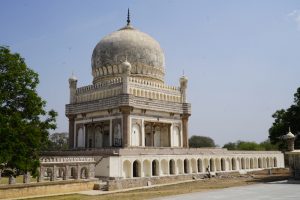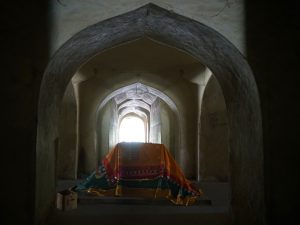Hyderabad, Puri & Kolkata March 9 – 14
Day 9 Saturday: Hyderabad, Telangana
Telangana is the newly formed 29th state of India which was separated from the north-western part of Andhra Pradesh. With an area of 112,077 km2 and a population of over 35 million (2011 census), it is the eight-largest state economy in India with robust IT software, industry and service sectors.
Located on the high Deccan Plateau, this region has been ruled by the Cholas, Mauryans, Satavahanas, Chalukyas, Kakatiyas, Delhi Sultanate, Golconda Sultanate (or Qutb Shahi dynasty (1518-1687), the Mughals (16th -17th centuries), the Nizams and finally the British. Hyderabad is the state’s cultural centre noted for its wealth and renowned historical structures including Charminar, Qutb Shahi Tombs and palaces. The historic city Golconda during the Kakatiya reign was once known for the mines that have produced some of the world’s most famous gems including the Koh-i-Noor which is part of the British Crown Jewels and the Hope Diamond owned by the Smithsonian Institute.
Hyderabad the state capital of Telangana, is the fourth most populous city with a population of over 7 million. Founded in 1591 by Mohammed Quli Qutb Shah (the fifth sultan of the Qutb Shahi dynasty who ruled from 1580 to 1612), Hyderabad has essentially served as a capital since the late 16th century. In 1724, Mughal viceroy Asif Jah I declared his sovereignty and started a new dynasty known as the Nizams of Hyderabad. It became a princely state during the British Raj. Historically known as a pearl and diamond centre, it continues to be known as the “City of Pearls”. Relics of Qutb Shahi and Nizam rule remain visible today. In 2012, Hyderabad was declared by the Indian government as the first “Best Heritage city of India”.
We stepped off the train shortly after 7 am. Our local guide arranged a minibus which dropped us off at the Treebo Grand Plaza Hotel near the Assembly and the Arena. On the way, we passed by the Hussain Sagar Lake. I was surprised to see a huge white standing Buddha statue. Then I remember Buddha is taken as the ninth incarnation of Vishnu.
Muthu managed to arrange early check-in. I felt much better after a cold shower! We set off at 10 am with a visit to the Golconda Fort. Golconda was the capital of seven Qutb Shahi kings from 1518 till end of 16th century.
The city and the fortress were built on a 120m-high granite hill. The imposing Golconda Fort first built by the Kakatiyas as part of their western defence, consists of four distinct forts with 10km long outer wall with 87 semi-circular bastions, eight gateways, and four drawbridges with a number of royal apartments and halls, temples, mosques, magazines, stables etc inside.
The fort has a remarkable with ingenious water supply system, excellent acoustic effect and ventilation system.
We entered by the “Fateh Darwaza” (the Victory Gate) studded with giant iron spikes to prevent elephants from battering them down. At Fateh Darwazaan, we could appreciate its extraordinary acoustic effect: a hand clap at a certain point below the dome at the entrance reverberates and can be heard clearly at the ‘Bala Hisar’ pavilion, the highest point almost a kilometre away.
We followed a path and climbed all the way to the ‘Bala Hisar’ and the king’s durbar (King’s court) at the top of the fort. Muthu had not briefed us on the demanding terrain. Without my hiking poles, I struggled and trailed behind. As a result, I did not catch up with the guide and hardly heard what he was saying. His English is also difficult to follow. I was relieved when the guided tour was over.
We then had lunch at ‘Paradise’ famous for biryani. I ordered a mutton biryani: the rice was fine but there was hardly any mutton.
In the afternoon we visited the Charminar, a square structure with sides of 20m long, four grand arches, a mosque and a 56m-high minaret at each corner. Constructed in 1591, it is Hyderabad’s most iconic structure, which is sometimes called the “Arc de Triomphe of the East“.
After a tour with the guide, we were given 30 minutes to explore the area. I intended to visit the nearby markets and the richly ornamented granite Makkah Masjid. But as my skirt did not fully cover my legs, I was not allowed to enter the mosque.
 As a result, I wandered aimlessly in the Laad Bazaar which sells bracelets, necklaces etc. The design and colours of Indian jewellery and atmosphere of the bustling bazaar are fascinating.
As a result, I wandered aimlessly in the Laad Bazaar which sells bracelets, necklaces etc. The design and colours of Indian jewellery and atmosphere of the bustling bazaar are fascinating.
When I indicated my wish to stay behind to Muthu, he looked scared and kept stressing that the area was not safe. I did not want to create problem for him and reluctantly returned to the hotel with the group at 4:30 pm.
I did not go out. Instead I spent the evening reading about the heritage buildings constructed during the Qutb Shahi and Nizam eras that showcase the Indo-Islamic architecture influenced by Medieval, Mughal and European styles. Carla and I read about the exquisite Falaknuma Palace which is now a five-star heritage hotel: we could have gone there for high tea. We decided to visit the Qutb Shahi tombs in the morning before leaving Hyderabad.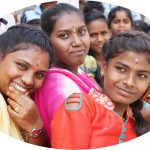
Day 10 Sunday: Hyderabad – Bhubaneshwar, Odisha – Puri
Carla and I had a wonderful time the Qutb Shahi Heritage Park, which is the necropolis of the Qutb Shahi dynasty. Carla called an Uber taxi and we only paid R150 for a comfortable journey.
The park located close to the fort spreads over 106 acres. All the Qutb Shahi sultans except the last sultan Abul Hasan Qutb Shah (who was taken prisoner in Aurangabad where he died) were buried here. The tombs form a large cluster and stand on a raised platform. The architectural style which blends the Persian and Indian forms is distinctive. The galleries of the smaller tombs are of a single storey while the larger ones are two storied. In the centre of each tomb is a sarcophagus which overlies the actual vault in a crypt below. The domes were originally overlaid with blue and green tiles.
- The first Sultan Quli Qutb Mulk built his tomb in 1543 during his lifetime. He also set the style of the tomb of his descendants. The tomb chamber proper is octagonal with each side measuring around 10m. There are three graves in this tomb chamber and 21 laid out on the surrounding terrace.
- Near to his tomb is the tomb of his son Jamsheed built in 1550. Unlike the squat tombs, this is the only Qutb Shahi tomb with two stories. The tomb of Jamsheed’s son Subhan who ruled for a short time, lies between his father and grandfather.
- The tomb of the fourth sultan Ibrahim Quli Qutb Shah is slightly larger than Sultan Quli’s tomb. This tomb has two graves in the main chamber and 16 on the terrace.
- The mausoleum of the fifth Sultan Muhammed Quli Qutb Shah is considered the grandest of all tombs. It is on a terrace of 65m square and 4m high. The tomb is in a vault below the terrace.
- The tomb of the sixth sultan Muhammed Qutb Shah is also very grand.
- The last royal tomb belongs to the seventh sultan Abdullah Qutb Shah.
Apart from the seven royal tombs, there are other note-worthy structures including the tomb of Fatima Sultan, sister of Muhammed Qutb Shah, the twin-tombs of the two favourite hakims (physicians), the great mosque and the mortuary bath.
We got a tuk tuk back to the hotel (R200) with a stop at the fast food shop ‘Paradise’ where we ordered our lunch. I bought chicken and naan for R300.
We departed for the airport at 2:30 pm. I was surprised to find an excellent highway connecting the city to the airport which is not too big but looks modern and user-friendly. Our Indigo flight to Bhubaneshwar, capital of Odisha departed on time around 5:30 pm. We arrived at our destination before 7 pm. Muthu had arranged a minibus to take us to Hotel Naren Palace in Puri. By the time I settled down, it was after 9 pm. I was hungry and had a bowl of noodles in a local eatery (R60).
Odisha formerly known as Orissa is the 9th largest state by area (155,707 km2) and 11th by population (about 46 million). It is the third most populous state of India in terms of tribal population. The modern state of Odisha was established in 1936 as a province of British India. Though it is one of the poorest states in India, its temples including the Lingaraja, Jagannath, Sarala, Maa tarini and Konark temples are outstanding examples of Odisha architecture or important pilgrimage sites.
 Carla did not sleep well and had been up since 5 am. When I got up at 6 am, I joined her and watched sunrise from the rooftop. We saw countless fishing boat already fishing off the beach.
Carla did not sleep well and had been up since 5 am. When I got up at 6 am, I joined her and watched sunrise from the rooftop. We saw countless fishing boat already fishing off the beach.
We walked to the Puri beach to take a closer look at the village. Some locals were already hanging out on the beach. To our horror, we found garbage and shits everywhere. Some men were squatting close to the water: they take the beach as a communal toilet! It is disgusting!
 I bought a dosa from a local eatery near the hotel. It’s delicious. Today, Mike, Brenda, Carla and I took a private car (R1400) to visit the 13th– century sun temple at Konark located about 35 km northeast from Puri. We paid an entrance fee of R600.
I bought a dosa from a local eatery near the hotel. It’s delicious. Today, Mike, Brenda, Carla and I took a private car (R1400) to visit the 13th– century sun temple at Konark located about 35 km northeast from Puri. We paid an entrance fee of R600.
 The Konark Temple, a World Heritage Site, is attributed to king Narasimhadeva of the Eastern Ganga Dynasty about 1250. This grandiose temple complex all in stones, has the appearance of a majestic 30m-high chariot with 12 pairs of exquisitely carved wheels to carry the Sun God, Surya on his daily journey across the sky.
The Konark Temple, a World Heritage Site, is attributed to king Narasimhadeva of the Eastern Ganga Dynasty about 1250. This grandiose temple complex all in stones, has the appearance of a majestic 30m-high chariot with 12 pairs of exquisitely carved wheels to carry the Sun God, Surya on his daily journey across the sky.
The wheels represent the months in a year while the eight large spokes mark the division of the day into three-hour sections. The seven horses pulling the chariot represent the days of the week. There are remarkable sculptures of gods, kings and peasants, elephants and horses. There are also dozens of erotic couples.
 It is not clear why the temple had been destructed. The large shikaratower over the sanctuary is in ruins. But the surviving structures and elements still show the intricate artwork, iconography and themes.
It is not clear why the temple had been destructed. The large shikaratower over the sanctuary is in ruins. But the surviving structures and elements still show the intricate artwork, iconography and themes.
After having been to Khajuraho, I find the famed Konark Temple behind scaffolding disappointing. I hope the restoration work succeeds in bringing back its former glory.
I also paid R30 to visit the museum which has a model of the temple. There is a brief account of similar sun temples in other parts of the world.
It’s hot and we took refuge in a restaurant next to the museum. It is the cleanest eatery I have had a meal so far. I had an excellent marsala tea and marsala omelette for R120. We were back in the hotel after 1 pm.
 Muthu had arranged an afternoon excursion to visit the Raghuraj Pur Village known for its heritage crafts including palm leaf paintings, stone and wood carvings, toys made of wood, papier-mache and cow dung.
Muthu had arranged an afternoon excursion to visit the Raghuraj Pur Village known for its heritage crafts including palm leaf paintings, stone and wood carvings, toys made of wood, papier-mache and cow dung.
We set off at 3:30 pm. When we passed by the Jagannath Temple, an important Hindu pilgrimage site, I asked whether we would stop at the temple after the village visit. (Muthu had mentioned this arrangement earlier). He was upset and said that he had switched the village visit to the afternoon to enable us to visit the Konark Temple in the morning. We should have gone there in the morning.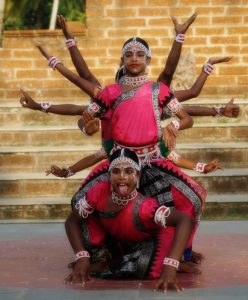
 We had problems with Muthu once over programme arrangement in Madurai. It was the second time he changed the programme without full explanation on the group programme and what we were supposed to do in our free time. He is a nice guy but not a good communicator and planner.
We had problems with Muthu once over programme arrangement in Madurai. It was the second time he changed the programme without full explanation on the group programme and what we were supposed to do in our free time. He is a nice guy but not a good communicator and planner.
We watched the dance performance by six performers aging 6 to 13 for half an hour. The performers are great and have apparently been travelling overseas. Great for them!
 We also spent an hour in an artist’s studio to look at his paintings and artwork. Mike and Jemma bought some paintings. We did not leave the village till 6 pm.
We also spent an hour in an artist’s studio to look at his paintings and artwork. Mike and Jemma bought some paintings. We did not leave the village till 6 pm.
I was keen to visit the Jagannath Temple and asked Muthu to drop me off near the temple. I could find my way back to the hotel. Brenda decided to join me.
Jagannath Temple, one of the four holy dhams (or abode of the divine), is dedicated to Jagannath, a form of Vishnu. The present temple was rebuilt from the tenth century onwards and begun by king Anantavarman Chodaganga Deva, first of the Eastern Ganga dynasty.
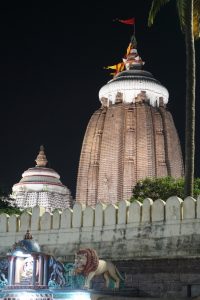
 Surrounded by a 6m-high fortified wall, the huge complex covers an area of over 37,000m2 and contains at least 120 temples and shrines. The main temple is a curvilinear temple and crowning the top is the ‘srichakra’ (an eight spoked wheel) of Vishnu. The temple tower built on a raised platform of stone and rising to 65m above the inner sanctum where the deities reside, dominates the surrounding landscape.
Surrounded by a 6m-high fortified wall, the huge complex covers an area of over 37,000m2 and contains at least 120 temples and shrines. The main temple is a curvilinear temple and crowning the top is the ‘srichakra’ (an eight spoked wheel) of Vishnu. The temple tower built on a raised platform of stone and rising to 65m above the inner sanctum where the deities reside, dominates the surrounding landscape.
The temple has four distinct sectional structures namely sanctum sanctorum where the triad deities (Jagannath, Balarama and Subhadra) are lodged on the throne of pearls; frontal porch; audience hall/dancing hall and offerings hall.
 There are elaborate daily worship services and many festivals each year. The temple is famous for its annual Ratha yatra or chariot festival in which three principal deities are pulled on huge and elaborately decorated temple cars.
There are elaborate daily worship services and many festivals each year. The temple is famous for its annual Ratha yatra or chariot festival in which three principal deities are pulled on huge and elaborately decorated temple cars.
Non-Hindu is not allowed to enter the temple. This restriction does not bother me: I can appreciate the temple complex from the outside. A walk round the complex would give me a feel and sense of the place.
The area is vibrant: many pilgrims flock to the temple with offerings in hand and holy cows are lying outside the temple. The streets full of street vendors are noisy and busy. I loved to spend more time exploring the area but Brenda was tired. We took a tuk tuk (R100) back to the hotel before 8 pm. Had I been on my own, I would have gone to the Narendra Sagar, the most holy tank in Puri.
I bought a curry chicken and chapati for R90 and had it in my room. It was the best red curry chicken I had in India. I went to bed with a full stomach at 9:30 pm as we had to get up around 4 am to catch the train to Kolkata.
We left the hotel before 4:45 am in order to take the Shatabdi Express train to Kolkata. It’s a comfortable ride with breakfast, tea and lunch served on board.
We disembarked at the famous Howrah Train Station around 1 pm. Pesa left the group. Five of us together with Muthu squeezed into a seven-seater 4WD. Poor Muthu was almost buried in the back seat with our luggage all over him. We crossed the Hooghy River on the Howrah Bridge.
 I vaguely remember this area as I took my first train ride to Agra in 1978 from the same station. But the buildings around the bridge area seem to be in worse conditions: they look dirty, crowded and derelict. We drove through Chowringhee and I saw the Oberoi Grand Hotel. The city remains as crowded and vibrant as ever.
I vaguely remember this area as I took my first train ride to Agra in 1978 from the same station. But the buildings around the bridge area seem to be in worse conditions: they look dirty, crowded and derelict. We drove through Chowringhee and I saw the Oberoi Grand Hotel. The city remains as crowded and vibrant as ever.
We stayed at Dee Empresa Hotel not far from the New Market and the Park Street. Muthu would take the group on an orientation walk at 4:30 pm.
Before the orientation walk, Mike and I rushed out to find a tour to the Sundarbans covering an area of 18,000 km2 at the Ganges- Brahmaputra Delta. The hotel receptionist told us to go to Backpackers Hostel nearby. We got an offer of R11000 for two for a full day excursion from Rajesh, the owner of the hostel who also runs the Backpackers Eco Village in Sukumari Village on Satjelia Island. When Carla learnt about the excursion, she decided to join.
During the orientation walk, we passed by the New Market and turned into Nehru Road to arrive at the Indian Museum. I notice a Park Metro station is located near the Park Street: the metro lines have been constructed since my visit in 1978. I must take a ride later.
We strolled along the Park Street lined with fancy cafés, shops and restaurants. We had our farewell dinner with Muthu but I did not see Muthu again on March 14 to say good-bye.
After dinner, Mike and I walked back to Backpackers Hostel to tell Rajesh that we had three persons for the excursion. Rajesh asked R12000 for three i.e. R4000 each. Fantastic!
I had an excellent sleep as the bed was comfortable and the room was at a pleasantly cool temperature.
Day 13 Wednesday: Sundarbans National Park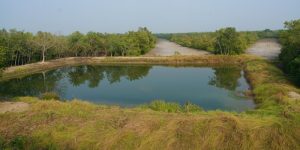
The Sundarbans National Park is part of the Sundarbans on the Ganges Delta and adjacent to the Sundarbans Reserve Forest in Bangladesh. The delta is densely covered by mangrove forests: it is the world’s largest tropical mangroves, a RAMSAR wetland site, a Biosphere Reserve and home to a variety of bird, reptile and invertebrate species including salt-water crocodile. It is also one of the largest reserves for the Bengal tigers and has been declared a Tiger Reserve to protect the endangered Royal Bengal Tiger. The Sundarbans Reserve with an area of 2,585 km2 within the delta has been on the World Heritage List. 
We had a long day. The park is some 170 km southeast of Kolkata. Rajesh picked us up himself at 6 am and we spent more than half an hour racing through the sleepy city to pick up a few more passengers. Nonetheless, I enjoyed this unexpected mini tour to the non-touristic parts of the city. Rajesh’s 4WD is old and not too comfortable. But he is an excellent driver.
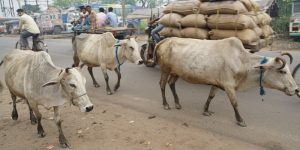
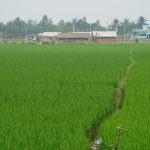 We followed the paved 2-laned Kolkata – Basanti Highway. We were at the countryside with paddy fields on both side of the road. We passed many villages and bustling small market towns.
We followed the paved 2-laned Kolkata – Basanti Highway. We were at the countryside with paddy fields on both side of the road. We passed many villages and bustling small market towns.
Once we arrived in Basanti, we walked to the pier and took a short boat ride crossing the river. Rajesh returned to his eco village on Satjelia Island while his staff took us to take another boat to Gosaba.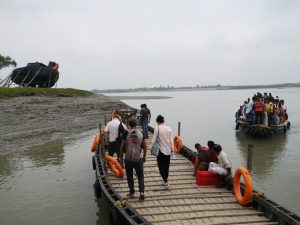
 Our guide arranged a motor-cart to take us to the opposite side of Gosaba Island to take a boat to the Sundarbans Reserve. The 5km-ride on unpaved road was most uncomfortable and nerve-breaking: my bones were aching and I thought my ribs had been fractured.
Our guide arranged a motor-cart to take us to the opposite side of Gosaba Island to take a boat to the Sundarbans Reserve. The 5km-ride on unpaved road was most uncomfortable and nerve-breaking: my bones were aching and I thought my ribs had been fractured.
 I was relieved to get off the dreadful motor-cart. We finally boarded a comfortable boat. After a short ride, we finally arrived at the entrance of the park around 11 am and were met by a park ranger.
I was relieved to get off the dreadful motor-cart. We finally boarded a comfortable boat. After a short ride, we finally arrived at the entrance of the park around 11 am and were met by a park ranger.
We spent over half an hour here looking at tortoise, crocodile and monitor lizard. We spotted some kingfishers too. The interpretation centre though small is informative about fauna and flora in the reserve.
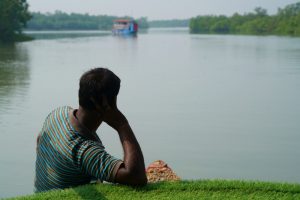 Then we began a two-hour cruise enjoying the mangrove forest and wildlife. Midday is not a good time to spot wildlife. We only spotted heron, egret, cormorant and kingfisher. As expected, no tiger was in sight. We had a cooked lunch onboard with fish curry and rice.
Then we began a two-hour cruise enjoying the mangrove forest and wildlife. Midday is not a good time to spot wildlife. We only spotted heron, egret, cormorant and kingfisher. As expected, no tiger was in sight. We had a cooked lunch onboard with fish curry and rice.
At the end of the cruise, the park ranger took us to another watch tower overlooking a waterhole. We had expansive view of the forest and saw wild boars, a deer family, monitor lizards, kingfishers and a woodpecker. Our ranger said he saw a tiger here two weeks ago. To fully appreciate the park, one should take a two to three-day tour.
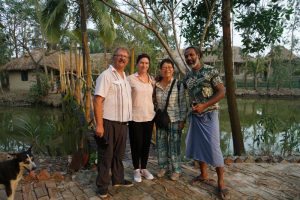
 At 4 pm, our boatman dropped us off at Rajesh’s eco village opposite the reserve. Rajesh from Bihar is admirable and most enterprising. He began to work in his teens, spent three months in Chung King Mansion in Hong Kong working for an Indian when he was 19, started the Backpackers Hostel in Kolkata ten years ago and finally built the eco village from stretch a few years ago. The village has now over a dozen of huts.
At 4 pm, our boatman dropped us off at Rajesh’s eco village opposite the reserve. Rajesh from Bihar is admirable and most enterprising. He began to work in his teens, spent three months in Chung King Mansion in Hong Kong working for an Indian when he was 19, started the Backpackers Hostel in Kolkata ten years ago and finally built the eco village from stretch a few years ago. The village has now over a dozen of huts.
We headed back to Kolkata before sunset. Though the traffic was light, we still took over four hours to get back to the hotel. Carla left for the airport at 11 pm. I am lucky to have her as a roommate.
Day 14 Thursday: End of Rail Tour



